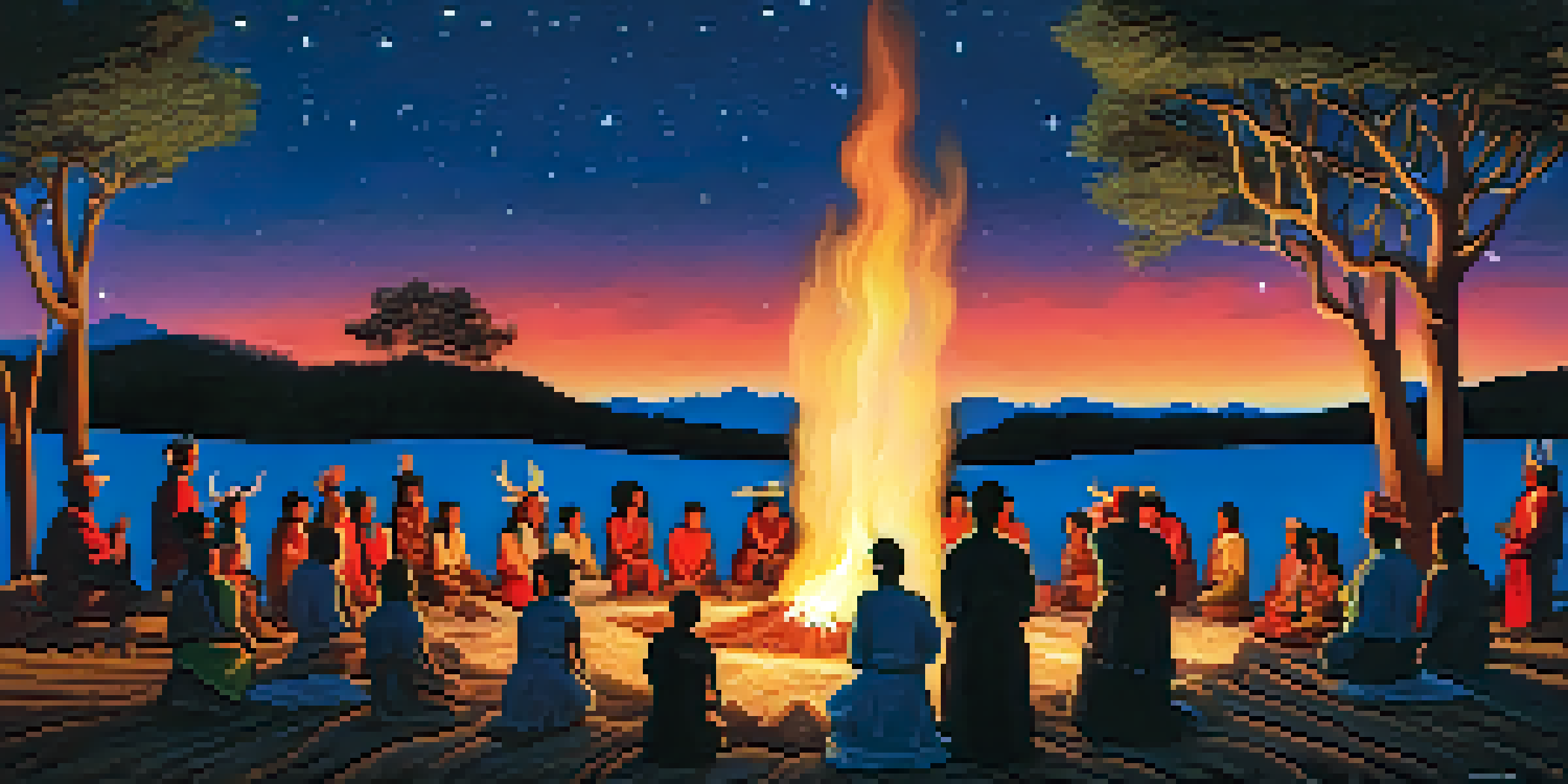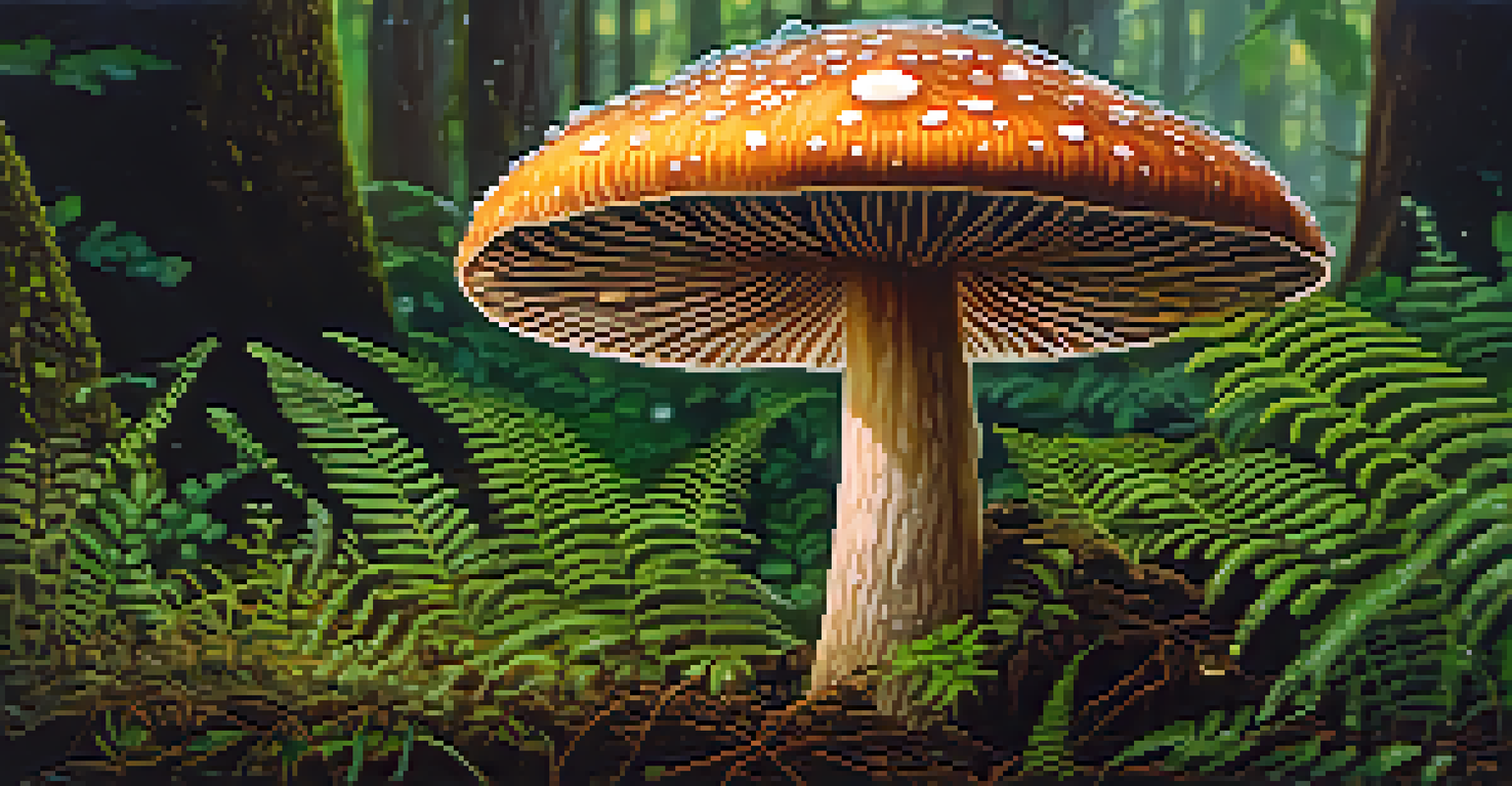Modern Applications of Indigenous Knowledge on Entheogens

Understanding Entheogens and Their Cultural Significance
Entheogens are substances that have been used for centuries in various cultures to induce altered states of consciousness. These substances, often derived from plants, are not just recreational; they hold deep spiritual significance. For many Indigenous communities, entheogens are integral to rituals, healing practices, and community bonding.
The use of entheogens is a sacred practice that connects us to the divine and to each other.
The term 'entheogen' itself comes from the Greek words meaning 'generating the divine within.' This highlights their role in connecting individuals with their spiritual selves and the universe. Such connections can provide profound insights and foster a sense of belonging within one's community and the broader cosmos.
As we explore the modern applications of Indigenous knowledge surrounding entheogens, it's essential to recognize the respect and reverence with which these substances are treated within their native contexts. Misappropriation or misunderstanding can dilute their sacredness and effectiveness.
Indigenous Practices: A Rich Tapestry of Wisdom
Indigenous cultures have long relied on their intimate knowledge of local ecosystems to use entheogens safely and effectively. This practice is steeped in traditions passed down through generations, where each usage is carefully contextualized within a broader spiritual framework. For instance, the use of peyote among Native American tribes is not merely about the substance but involves rituals and teachings that guide the experience.

These practices often emphasize the importance of community and shared experiences, underscoring that entheogens can serve as a bridge to deeper connections with others. Through collective ceremonies, participants can access not only personal insights but also a shared understanding of their place within the community.
Cultural Significance of Entheogens
Entheogens are deeply rooted in Indigenous cultures, serving as vital tools for spiritual connection and community bonding.
Moreover, these traditions are adaptable, evolving over time while still holding onto core principles. This adaptability is crucial as modern contexts present new challenges and opportunities for Indigenous practices.
Scientific Research: Bridging Tradition and Modernity
The resurgence of interest in entheogens has led to a growing body of scientific research aiming to understand their effects on the human mind and body. Studies have shown promising results for mental health treatments, particularly for conditions like PTSD, depression, and anxiety. Researchers are increasingly recognizing that Indigenous knowledge can provide valuable insights into the therapeutic potential of these substances.
The future of entheogens relies on respecting the past and integrating traditional knowledge with modern science.
For example, the traditional use of psilocybin mushrooms in various cultures is now being studied for its potential to facilitate profound psychological healing. This convergence of Indigenous wisdom and modern science can enhance our understanding of how these substances work and their applications in therapeutic settings.
However, it's vital for researchers to collaborate with Indigenous communities to ensure that their knowledge is respected and integrated into studies ethically. This partnership can lead to more holistic approaches that honor both scientific inquiry and traditional practices.
Modern Therapeutic Applications of Entheogens
In recent years, there has been a surge in clinical trials exploring the therapeutic benefits of entheogens. These trials often incorporate Indigenous practices, such as guided ceremonies, to create a safe and supportive environment for participants. The results have been encouraging, with many reporting significant relief from their mental health struggles.
The therapeutic use of entheogens also emphasizes the importance of set and setting, a concept rooted in Indigenous practices. This refers to the mindset of the individual and the physical environment in which the substance is consumed. Creating a supportive atmosphere can enhance the healing experience and mitigate potential risks.
Ethical Use of Indigenous Knowledge
Respecting Indigenous practices and knowledge is crucial for the responsible application of entheogens in modern contexts.
As the field continues to evolve, it’s crucial to maintain a dialogue with Indigenous communities to ensure these practices are honored and not exploited. By doing so, we can develop a model that respects cultural heritage while advancing scientific understanding.
Ethical Considerations: Respecting Indigenous Knowledge
As interest in entheogens grows, so do the ethical concerns surrounding their use. Many Indigenous communities have expressed apprehension about the appropriation of their traditional practices without proper respect or understanding. This concern highlights the need for a thoughtful approach that honors the origins and significance of these substances.
Engaging with Indigenous knowledge holders is essential for creating an ethical framework around the use of entheogens. This collaboration ensures that the benefits of these substances are shared fairly and that the rights of Indigenous peoples are respected. It also fosters a greater appreciation for the complexity and richness of these traditions.
Furthermore, ethical considerations extend beyond just the use of substances; they encompass issues of consent, cultural representation, and the potential commercialization of sacred practices. Addressing these concerns is vital for fostering a respectful relationship between modern practitioners and Indigenous communities.
Education and Awareness: Sharing Indigenous Perspectives
Education plays a crucial role in bridging the gap between Indigenous knowledge and modern applications of entheogens. By fostering awareness of the cultural and historical contexts surrounding these substances, we can cultivate a deeper appreciation for their significance. Workshops, seminars, and cultural exchanges can help illuminate the wisdom that Indigenous communities possess.
Through these educational initiatives, individuals can learn about the ethical considerations necessary for engaging with entheogenic practices. This knowledge empowers people to approach entheogens with the respect they deserve, promoting a more informed and sensitive use of these powerful substances.
Therapeutic Potential of Entheogens
Recent research shows promising therapeutic benefits of entheogens, particularly for mental health conditions, when used in culturally respectful ways.
Moreover, highlighting Indigenous perspectives helps to counteract stereotypes and misconceptions that often surround entheogens. By sharing stories and teachings from Indigenous voices, we can create a more nuanced understanding of these practices and their importance.
The Future of Entheogens: A Collaborative Path Forward
Looking ahead, the future of entheogens will likely be shaped by ongoing collaborations between Indigenous communities and modern researchers. This partnership can lead to innovative approaches that honor traditional wisdom while exploring new applications. As society becomes more open to discussing mental health and alternative therapies, entheogens may play an increasingly prominent role.
However, navigating this landscape requires careful consideration of ethical guidelines and respect for Indigenous knowledge. By prioritizing these values, we can create a framework that supports the responsible use of entheogens while uplifting the voices of Indigenous peoples.

Ultimately, the journey forward is about balance—integrating the profound insights of Indigenous practices with the advancements of modern science. Together, we can cultivate a deeper understanding of entheogens and their potential to enrich our lives.